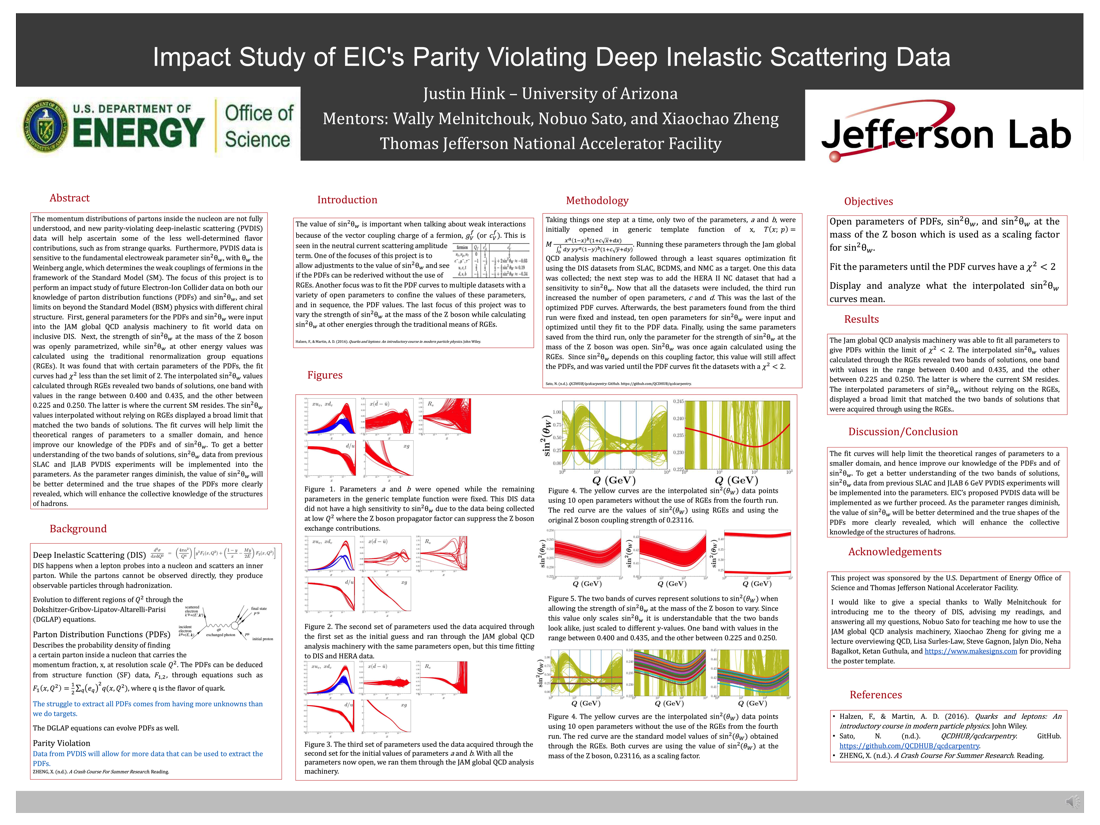Undergraduate Research at Jefferson Lab
Impact Study of EIC's Parity Violating Deep Inelastic Scattering Data
Student: Justin Hink
School: University of Arizona
Mentored By: Dr. Wally Melnitchouk
The momentum distributions of partons inside the nucleon are not fully understood, and new parity-violating deep-inelastic scattering (PVDIS) data will help ascertain some of the less well-determined flavor contributions, such as from strange quarks. Furthermore, PVDIS data is sensitive to the fundamental electroweak parameter sin2θω, with θω the Weinberg angle, which determines the weak couplings of fermions in the framework of the Standard Model (SM). The focus of this project is to perform an impact study of future Electron-Ion Collider on both our knowledge of parton distribution functions (PDFs) and sin2θω, and set limit on beyond the Standard Model (BSM) physics with different chiral structure. First, general parameters for the PDFs and sin2θω were input into the JAM global QCD analysis machinery to fit world data on inclusive DIS. Next, the strength of sin2θω at the mass of the Z boson was openly parametrized, while sin2θω at other energy values was calculated using the traditional renormalization group equations (RGEs). It was found that with certain parameters of the PDFs, the fit curves had χ2 less than the set limit of 2. The interpolated sin2θω values calculated through RGEs revealed two bands of solutions, one band with values in the range between 0.400 and 0.435, and the other between 0.225 and 0.250. The latter is where the current SM resides. The sin2θω values interpolated without relying on RGEs displayed a broad limit that matched the two bands of solutions. The fit curves will help limit the theoretical ranges of parameters to a smaller domain, and hence improve our knowledge of the PDFs and of sin2θω. To get a better understanding of the two bands of solutions, sin2θω data from previous SLAC and JLAB PVDIS experiments will be implemented into the parameters. As the parameter ranges diminish, the value of sin2θω will be better determined and the true shapes of the PDFs more clearly revealed, which will enhance the collective knowledge of the structures of hadrons.
[Watch the presentation on YouTube]

Citation and linking information
For questions about this page, please contact Education Web Administrator.
